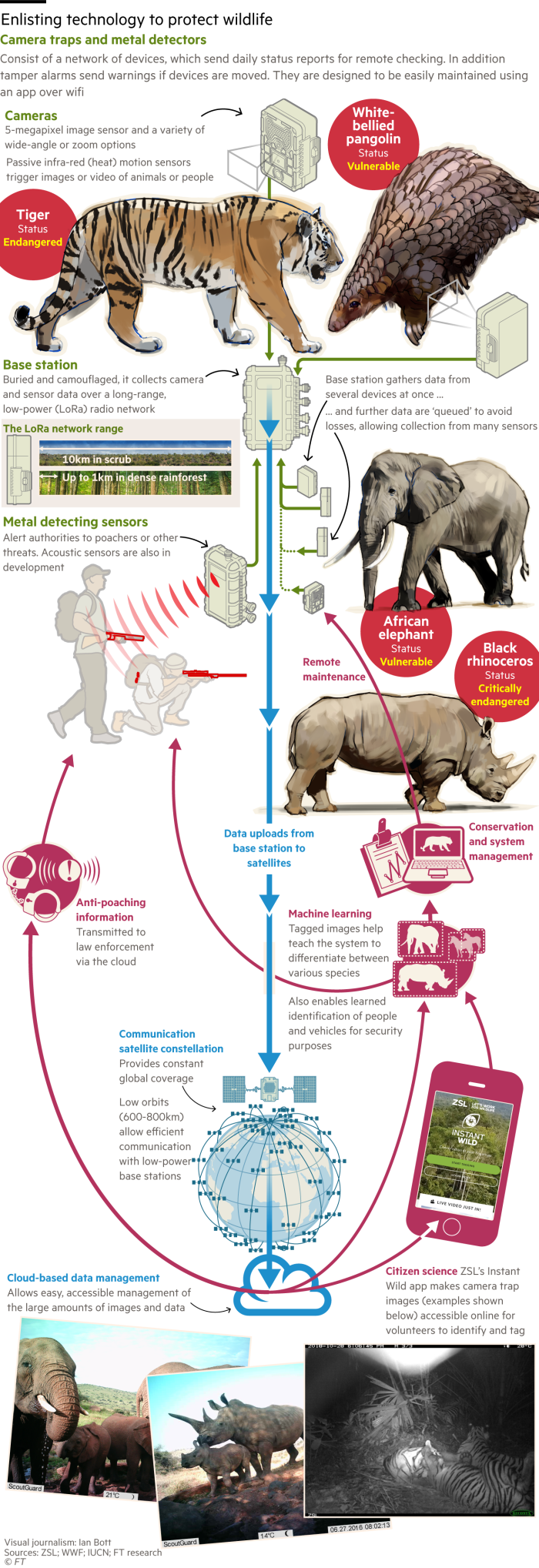Science v poachers: how tech is transforming wildlife conservation

It is dry season in a Kenyan national park. A small group of poachers walks along a dried-up riverbed, aiming to kill a black rhino and remove its horns, which could fetch as much as $100,000 on the Asian black market. The men are concealed by undergrowth on the riverbanks but seen by a poaching alarm system developed by the Zoological Society of London. Their guns and knives trigger the Instant Detect system’s hidden metal detector, which activates a camera camouflaged in a bush. The images travel by radio to a base station and then via a communications satellite to the park headquarters, alerting the authorities in time to dispatch rangers and catch the gang.

